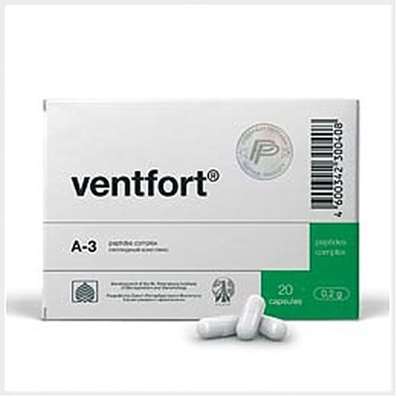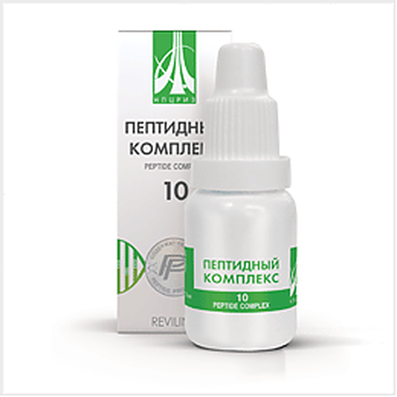Instruction for use: Loratadine
I want this, give me price
The Latin name of the substance Loratadine
Loratadinum (Genus. Loratadini)
Chemical name
4- (8-Chloro-5,6-dihydro-11H-benzo [5,6] cyclohepta [1,2-b] pyridin-11-ylidene) -1-piperidinecarboxylic acid ethyl ester
Gross formula
C22H23ClN2O2
Pharmacological group:
H1-Antihistamines
The nosological classification (ICD-10)
H10.1 Acute atopic conjunctivitis: Allergic conjunctivitis; Allergic eye diseases; Allergic conjunctivitis; Allergic conjunctivitis caused by chemical and physical factors; Allergic rhinoconjunctivitis; Allergic inflammation of the eyes; Spring Qatar; Spring keratitis; Spring conjunctivitis; Conjunctivitis allergic; Year-round allergic conjunctivitis; Exacerbation of pollinosis in the form of rhinoconjunctival syndrome; Acute allergic keratoconjunctivitis; Acute allergic conjunctivitis; Superficial bacterial infection of the eyes; Rhinoconjunctivitis; Seasonal allergic conjunctivitis; Seasonal conjunctivitis; SENSORY; Chronic allergic keratoconjunctivitis; Chronic allergic conjunctivitis
J30 Vasomotor and allergic rhinitis: Allergic rhinopathy; Allergic rhinosinusopathy; Allergic diseases of the upper respiratory tract; Allergic rhinitis; Allergic rhinitis seasonal; Vasomotor runny nose; Prolonged allergic rhinitis; All-year-round allergic rhinitis; All-year allergic rhinitis; Year-round or seasonal allergic rhinitis; All-the-year-round rhinitis of an allergic nature; Rhinitis vasomotor allergic; Exacerbation of pollinosis in the form of rhinoconjunctival syndrome; Acute allergic rhinitis; Edema of the nasal mucosa; Edema of the nasal mucosa; Edema of the mucous membrane of the nasal cavity; Swelling of the nasal mucosa; Swelling of the nasal mucosa; Pollinosis; Permanent allergic rhinitis; Rhinoconjunctivitis; Rhinosinusitis; Rhinosinusopathy; Seasonal allergic rhinitis; Seasonal allergic rhinitis; Hay rhinitis; Chronic allergic rhinitis; Allergic diseases of the respiratory tract
J31 Chronic rhinitis, nasopharyngitis and pharyngitis: Allergic rhinosinusopathy; Inflammation of the nasal mucosa; Infectious and inflammatory diseases of ENT organs; Catarrh of the nasopharyngeal region; Year-round rhinitis; Ozena; Persecution in the throat or nose; Rhinitis hyperplastic; Rhinitis chronic; Pharyngoesophagitis; Chronic Bacterial Rhinitis
J45 Asthma: Asthma of physical effort; Asthmatic conditions; Bronchial asthma; Bronchial asthma of light course; Bronchial asthma with difficulty in sputum discharge; Bronchial asthma of severe course; Bronchial asthma physical effort; Hypersecretory asthma; The hormone-dependent form of bronchial asthma; Curbing asthma attacks with bronchial asthma; Non-allergic bronchial asthma; Night Asthma; Exacerbation of bronchial asthma; Attack of bronchial asthma; Endogenous forms of asthma; Night attacks of asthma; Cough with bronchial asthma
L20 Atopic dermatitis: Allergic diseases of the skin; Allergic skin disease noninfectious etiology; Allergic skin disease etiology nemikrobnoy; Allergic skin diseases; Allergic skin lesions; Allergic reactions on the skin; atopic dermatitis; Allergic dermatosis; Allergic diathesis; Allergic itching dermatosis; Allergic skin disease; Allergic skin irritation; allergic Dermatitis; atopic Dermatitis; allergic dermatoses; exudative diathesis; Itchy atopic eczema Itchy allergic dermatosis; Allergic skin disease; Cutaneous allergic reaction to drugs and chemicals; Cutaneous reactions to medications; Skin and allergic disease; Acute eczema; common neurodermatitis; Chronic atopic dermatitis; Exudative diathesis
L23 Allergic contact dermatitis: Allergic dermatitis;Purulent allergic dermatopathies; Contact allergic reaction; Contact allergic dermatitis; Contact allergic dermatitis; Photoallergic contact dermatitis
L29 Itching: Itching with partial obstruction of the biliary tract; Dermatitis itchy; Dermatosis with persistent itching; Other itching dermatoses; Itching dermatoses; Itching allergic dermatosis; Itching dermatitis; Itching dermatosis; Itching itch; Excruciating itching; Severe itching; Endogenous itching; Skin itching with dermatosis; Restricted itchy dermatitis; Itching of the skin; Itchy scalp; Itching eczema
L50 Urticaria: Idiopathic chronic urticarial; Injury Urticaria; Chronic urticarial; Hives of the newborn
T78.3 Angioedema: Edema Quincke; Laryngeal exacerbation with angioneurotic edema; Recurrent angioedema; Allergic edema; Recurrent swelling of Quincy
T78.4 Unspecified Allergy: Allergic reactions to insulin; Allergic reactions to insect stings; Allergic reactions similar to systemic lupus erythematosus; Allergic diseases; Allergic diseases of mucous membranes; Allergic diseases and conditions resulting from increased release of histamine; Allergic diseases of mucous membranes; Allergic symptoms; Allergic symptoms in the mucous membranes; Allergic reactions; Allergic reactions caused by insect bites; Allergic reactions; Allergic conditions; Allergic laryngeal edema; allergopathy; allergic conditions; Allergy; House dust allergy; Anaphylaxis; Cutaneous reactions to medications; Skin reaction to insect stings; Cosmetic allergy; Drug allergy; Acute allergic reaction; Laryngeal edema allergic genesis and background radiation; Food and drug allergy
CAS Code
79794-75-5
Characteristics of the substance Loratadine
White or off-white powder. Insoluble in water, very soluble in acetone, alcohol, chloroform.
Pharmacology
Pharmacological action - antiallergic, antihistamine, antipruritic, antiexudative.
Selectively blocks H1-histamine receptors and prevents the action of histamine on smooth muscles and blood vessels, reduces the permeability of capillaries, inhibits exudation, reduces itching and erythema. Prevents development and facilitates the course of allergic reactions. The effect develops in 1-3 hours, reaches a maximum after 8-12 hours and persists for at least 24 hours. It has a weak bronchodilating activity. With a 28-day application of the development of tolerance is not observed. Does not affect the central nervous system (loratadine and its metabolites do not penetrate the BBB) and the QT interval on the ECG.
In animal experiments, there was no mutagenic effect, the effect on fertility of female and male rats. At a dose of 25 mg / kg (rat) and 40 mg / kg (mouse), it induces microsomal liver enzymes. With prolonged studies in mice (40 mg / kg) and rats (10 mg / kg and 25 mg / kg), cases of hepatocellular tumors have been reported.
After oral administration, it is rapidly absorbed. Cmax in the blood is created after 1.3 hours, the active metabolite (descarbonethoxyloratadine) after 2.5 hours. The intake of food has no significant effect on the pharmacokinetics (AUC of loratadine can be increased by 40%, and its active metabolite by 15%), but Slows the time to reach Cmax for 1 hour (it is recommended to take the drug before meals). At a plasma concentration of 2.5-100 ng / ml, binding to proteins is 97% (active metabolite 73-77% at a level of 0.5-100 ng / ml). Equilibrium concentrations of loratadine and its active metabolite in plasma are reached by day 5. Intensively biotransformed in the liver by the cytochrome P450 system (mainly through CYP3A4 and to a lesser extent - CYP2D6) to form the active metabolite - descarbotoxytoloratadine. Within 24 hours, 27% of the total dose is excreted in the urine in the form of hydroxylated metabolites and / or conjugates. After 10 days about 80% in the form of metabolites are excreted equally in urine (40%) and feces (40%). T1 / 2 loratadine - 3 - 20 hours (an average of 8.4 hours), the active metabolite - 8.8 to 92 hours (an average of 28 hours). The volume of loratadine distribution is 119 l / kg, Cl is 142-202 ml / min / kg. Easily penetrates into breast milk and creates concentrations equivalent to the level in the plasma. After taking a dose of 40 mg, about 0.03% is excreted in the mother's milk for 48 hours. In patients with chronic renal failure (Cl creatinine <30 mL / min), the AUC and Cmax of loratadine and its active metabolite increase (73% on average and 120%, respectively), and the average value of T1 / 2 does not change and is 7.6 hours for loratadine and 23.9 h for descabroxetoxyloratadine. Conducting hemodialysis in patients with chronic renal failure does not affect the pharmacokinetics of loratadine and its active metabolite. With alcoholic liver damage, Cmax plasma and AUC of loratadine are doubled, and descaboetoxyloratadine does not change, T1 / 2 loratadine is 24 h and its active metabolite is 37 h. In elderly patients, the AUC and Cmax values of loratadine and descarboetoxyloratadine are increased by 50%, while T1 / 2 loratadine and its active metabolite is 18.2 (6.7-37 h) and 17.5 h (11-38 h), respectively.
Application ofsubstance Loratadine
Allergic rhinitis (seasonal and year-round), hay fever, allergic conjunctivitis, chronic idiopathic urticaria, itching dermatoses (contact allergic dermatitis, chronic eczema), angioedema, bronchial asthma (ancillary), allergic reactions to insect bites, pseudoallergic reactions to histamine-liberators.
Contraindications
Hypersensitivity, breast-feeding, children under 2 years.
Restrictions
Pregnancy.
Application in pregnancy and breastfeeding
Use is only possible if the intended benefit to the mother exceeds the potential risk to the fetus and newborn.
The action category for fetus by FDA is B.
Side effects of Loratadine
From the nervous system and sensory organs: headache (12%), drowsiness (8%), fatigue (4%), 2% or less - impaired concentration, dizziness, nervousness, anxiety, agitation (in children), insomnia , Fainting, amnesia, depression, hyperkinesia, tremor, paresthesia, hypoesthesia, dysphonia, visual impairment, tearing change, conjunctivitis, blepharospasm, pain in the eyes and ears, tinnitus; Very rarely - cramps.
On the part of the digestive tract: dry mouth (3%), 2% or less - increased appetite, weight gain, anorexia, nausea, changes in salivation, taste disorders, toothache, stomatitis, vomiting, gastritis, flatulence, indigestion, constipation Or diarrhea; Very rarely - jaundice, hepatitis, necrosis of the liver.
On the part of the respiratory system: 2% or less - nasal congestion, sneezing, dry nose, nosebleeds, sinusitis, pharyngitis, laryngitis, cough, hemoptysis, bronchitis, bronchospasm, chest pain, upper respiratory tract infections, dyspnoea.
On the part of the genitourinary system: a change in the color of urine, painful urge to urinate, dysmenorrhea, menorrhagia, vaginitis, weakening of libido, impotence, very rarely - swelling.
From the musculoskeletal system: back pain, arthralgia, myalgia, cramps of calf muscles.
From the CVS: hypertension or hypotension, palpitations, tachycardia; Very rarely - supraventricular tachyarrhythmia.
Allergic reactions: hyperemia, skin rash, hives, dermatitis, itching, angioedema; Very rarely anaphylaxis.
Other: dry hair and skin, thirst, asthenia, malaise, fever, chills, photosensitivity, excessive sweating, pain in the mammary glands, weight gain; Very rarely - alopecia, an increase in the size of the chest, erythema multiforme.
Interaction
Erythromycin and ketoconazole (CYP3A4 inhibitors), cimetidine (inhibitor CYP3A4 and CYP2D6) increase the concentration of loratadine and its active metabolite in the blood. Reduces the level of erythromycin in the plasma by (15%). Does not potentiate the effect of alcohol on the central nervous system.
Overdose
Symptoms: headache, drowsiness, tachycardia. In children weighing less than 30 kg with the intake of syrup in a dose exceeding 10 mg, extrapyramidal disorders, palpitations were noted.
Treatment: induction of vomiting with syrup and ipecacuanas, gastric lavage, the appointment of activated charcoal; Symptomatic and supportive therapy. Hemodialysis is ineffective.
Routes of administration
Inside.
Precautions for the substance Loratadine
It is recommended to cancel treatment at least 1 week before the skin test for allergens.

 Cart
Cart




